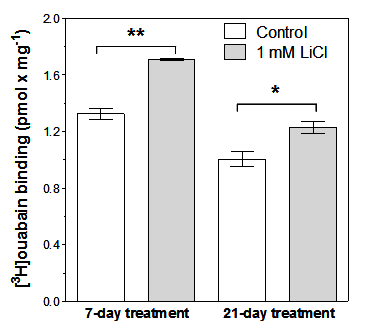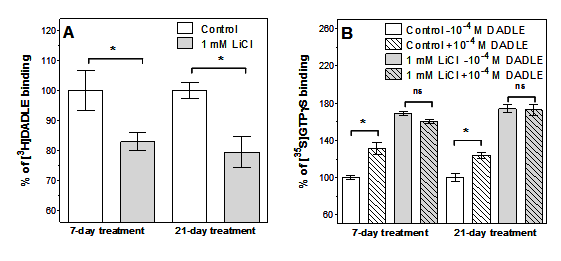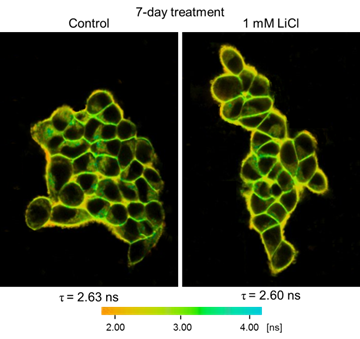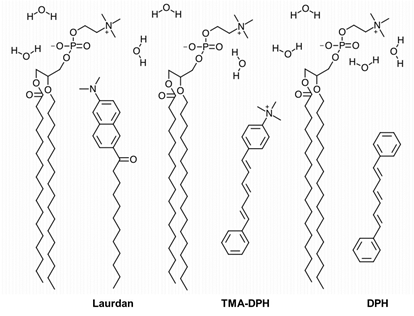The effect of monovalent ions on delta-opioid receptors – analysis of lithium effect in living cells and isolated cell membranes
Activity of opioid receptor (OR) is among others modulates by monovalent cations especially by sodium (Na+) and lithium (Li+) which atomic radius is very similar to those of sodium. Lithium is used in psychiatry as a mood stabilizer (see review article Vošahlíková and Svoboda, 2016). Monovalent ions modulate GPCR signalling in not fully understood mechanism.
We compared the effect of different concentration of sodium, potassium, and lithium ions on δ-opioid receptor agonist and antagonist binding parameters and coupling with the cognate G proteins in plasma membranes isolated from HEK293 cell line stably expressing δ-opioid receptor. We determined distinction between high- and low-affinity sites for Na+ which has not been presented in the current literature (Vošahlíková and Svoboda, 2011, Vošahlíková et al., 2014).
Biophysical analysis of interaction of monovalent ions with plasma membranes of above mentioned model cell using fluorescence techniques showed the importance of plasma membrane polar head-group region. The effect of ions was examined also in hydrophobic plasma membrane core. (For further details see Vošahlíková et al., 2014 and PhD Thesis of M. Vošahlíková 2014)
Our latest results regarding the lithium effect on cells are demonstrated in figures 1-3.
Fig. 1. Up-regulation of Na,K-ATPase in HEK293 cells exposed to 1 mM LiCl for 7 and 21 days; [3H]ouabain binding.

Fig. 2. [3H]DADLE binding (A) and basal and DADLE-stimulated [35S]GTPγS binding (B) in control and Li-treated HEK293 cells; 7- and 21-day treatment.

Fig. 3. Distribution of lifetime values of TMA-DPH fluorescence (τ) in living HEK293 cells; comparison of control and Li-treated cells.

Fig. 4. Chemical structures of Laurdan, TMA-DPH and DPH and their approximate location in membrane lipid bilayer.

